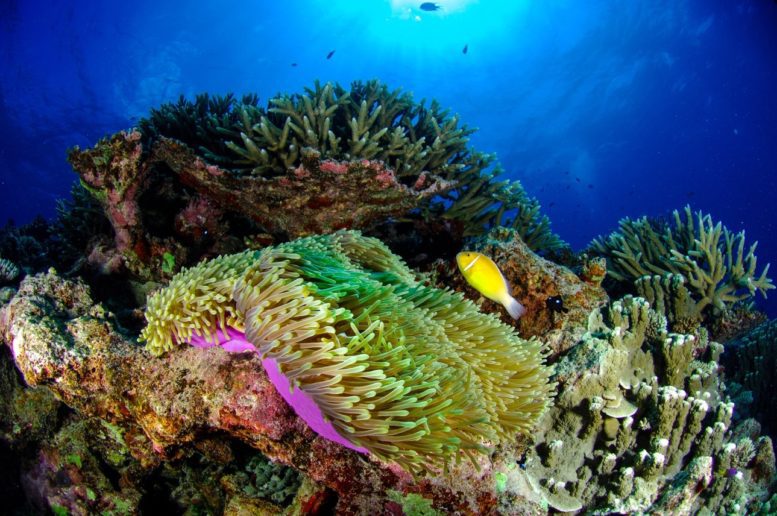Deep coral reefs provide shallow hope for near-surface reefs in need of recovery, new findings suggest.
A team of researchers including FIU marine biologist Yannis P. Papastamatiou explored reefs to test a widely held hypothesis that climate-stressed life from shallow reefs can take refuge at depths from 100 to 500 feet beneath the ocean’s surface.
The results are clear: deep and shallow reefs are actually different systems with their own species, and deep reefs are just as threatened by climate impacts, storms, and pollution as their shallow counterparts. Their work, to be published June 20 in Science represents a major shift in thinking for scientists, conservation managers, and members of the public hoping to give coral reefs a fighting chance.
Nearly 75 percent of the world’s coral reefs are currently threatened by the combined impacts of overfishing, habitat destruction, water pollution, and climate change. Though coral reefs provide human societies with vital goods and services worth an estimated several hundred billion dollars per year, very little is known about shallow reefs’ deeper counterparts—the species they shelter, the threats they face, or the refuge they’ve been thought to provide.
“Most studies of coral reef ecology take place between the surface and 100 feet,” Papastamatiou said. “That’s not because the reefs end at 100 feet, but rather that it’s much harder for scientists to dive and work below those depths. Hence, these deeper reefs are traditionally understudied.”
Charting life in the deep
In these deep reefs, which lie beyond recreational diving limits, animals live in partial darkness. Many species observed in the twilight zone are new scientific discoveries—but determining if and how deep and shallow reefs are connected required a much closer look at reefs around the world.
“We have hope for coral reefs around the world,” said Luiz Rocha, California Academy of Science’s ichthyology curator and Hope for Reefs initiative co-leader. “Rather than take that hope away, these findings show us the critical importance of protecting twilight zone reefs in places we don’t normally look. We can’t ignore the deep while we throw our collective might behind protecting and restoring shallow coral reefs. Reefs—in the light and in the dark—need our urgent attention.”
Twilight zone reefs feel it all
The study describes species with strong preferences for specific depth zones—meaning there are few shallow reef residents comfortable moving between light-filled reefs and shadowy twilight zones.
However, top predators — key players in the marine ecosystem, like sharks and jacks —consistently move between shallow and deep reefs each day. Their deep and shallow reef populations appear connected.
More importantly, deeper reefs also are susceptible to human and natural impacts like hurricanes and tropical storms that can choke live corals and harm marine life with sand, silt, and natural debris like tree branches.






